“Oh, I do like to be beside the seaside!”
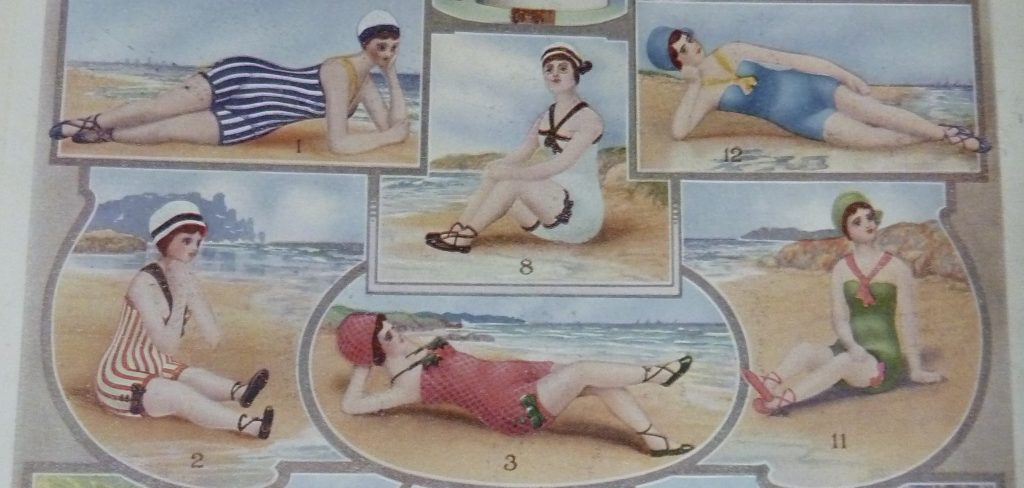
The school holidays have officially started and while we may not be going abroad on holiday, many of us are looking forward to short breaks or days out in this country. The concept of a fortnight away in the sun is quite a modern one. It was not until 1938 that the Holidays with Pay Act introduced the right for certain groups of workers to have one week’s paid holiday per year. The outbreak of war the following year, with its interruption to travel within the UK, and many beaches out of bounds for fear of invasion, meant that family holidays were largely on hold until the late 1940s. It was only in the later 1960s, with the advent of affordable package holidays and cheap flights, that the majority of British families could even consider a foreign holiday.
However, from the late 18th century onwards, many towns had held annual holiday periods when an entire local industry closed down for a week or more. Often known as ‘Wakes Weeks’, in Stoke-on-Trent the holiday was known as “Potters’ Holiday” or just “Potters”. With the spread of the railway network across Britain local people, who could afford to do so, decamped en masse to popular seaside resorts in Lancashire or North Wales. There, for the duration of the Potters’ Holiday period it was possible to buy imported copies of the local Staffordshire paper – and, for those who were self-catering, the all-important Staffordshire oatcakes.
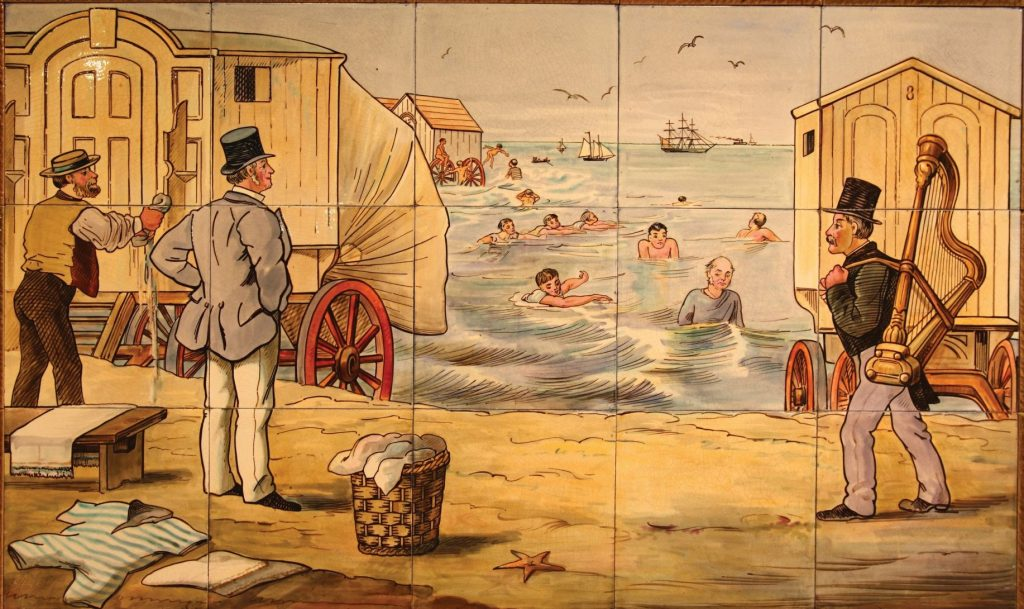 “Summer” tile panel, painted by Albert Slater, Minton Hollins & Co., Stoke-upon-TRent, Staffordshire, 1880s
“Summer” tile panel, painted by Albert Slater, Minton Hollins & Co., Stoke-upon-TRent, Staffordshire, 1880s“Oh I do like to walk along the Prom, Prom, Prom” The popularity of these holiday resorts with their safe seaside bathing beaches can be seen in this tile panel of “Summer” made by the firm of Minton Hollins & Co. One of a set of four, depicting the Seasons, it shows a scene at the seaside, probably Llandudno, which was a becoming a popular holiday destination in the 19th century for Staffordshire holiday makers. In the foreground a street musician carries a Welsh triple harp, a bather wrings out a towel and another man stands looking out to sea. In the background bathing machines have been pulled down to the sea to protect the modesty of the (male) bathers as they change and enter the water. Sea bathing in England was segregated by gender until 1901, after which the use of bathing machines rapidly declined, bathing costumes became compulsory, and mixed bathing became popular.
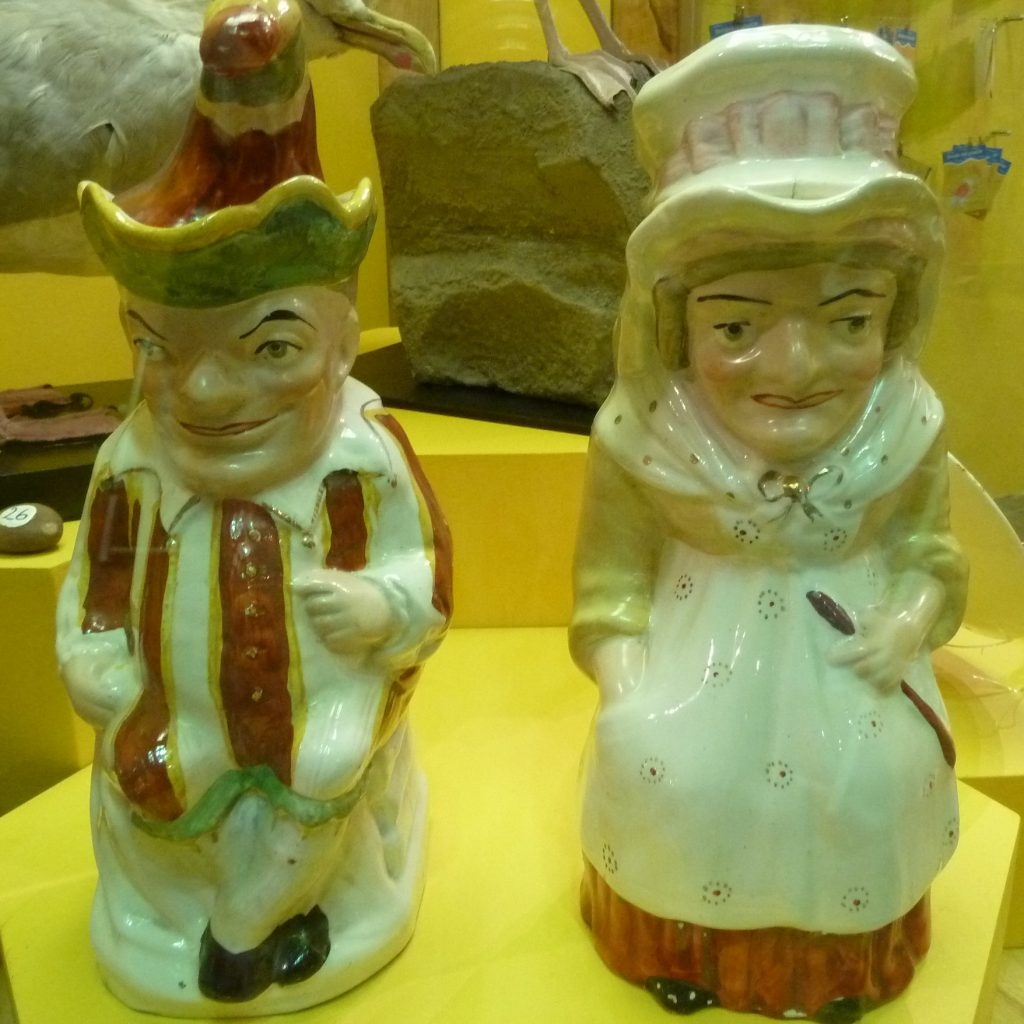 Punch & Judy figures by William Kent. Burslem, Staffordshire, early 20th century
Punch & Judy figures by William Kent. Burslem, Staffordshire, early 20th century“That’s The Way to Do It!” Once at the seaside, holiday makers wanted entertaining and Mr Punch has been part of the British seaside since the 19th century but his roots go back much further. In 1662 the diarist Samuel Pepys recorded seeing a puppet show featuring the character ‘Pulcinello’ – whose name was subsequently anglicised to ‘Punch’ and by the late 18th century there were many such shows to be seen in London and other large towns. These early shows featured marionettes – puppets suspended from strings – rather than the more familiar glove puppets of today and a fixed performance area, but by the early 18th century glove puppets and a portable cloth covered booth had become the norm.
At first Punch, like his Italian namesake Pulcinello, wore white, but he soon developed his distinctive striped costume and hat, adapted from a traditional English jester’s outfit. His wife was originally called Joan, not Judy, and his main adversary was the Devil, rather than the Crocodile. These early shows were most commonly seen in the streets of towns and villages and many travelled from fair to fair around the country. With the development of seaside resorts in the mid-19th century Mr Punch moved to the beaches, promenades and piers to entertain the crowds of holiday makers and all the elements of a traditional Punch and Judy show were in place – including the Policeman, the baby, the Crocodile and his sausages.
Despite being criticised over the years for their violence and anarchy, Punch and Judy shows remain popular with both children and adults and a few years ago they were listed as one of the twelve most important British icons, alongside Stonehenge, Routemaster buses and Alice in Wonderland. Despite their well-publicised marital difficulties Punch and his wife are still together 350 years after they first came to England.
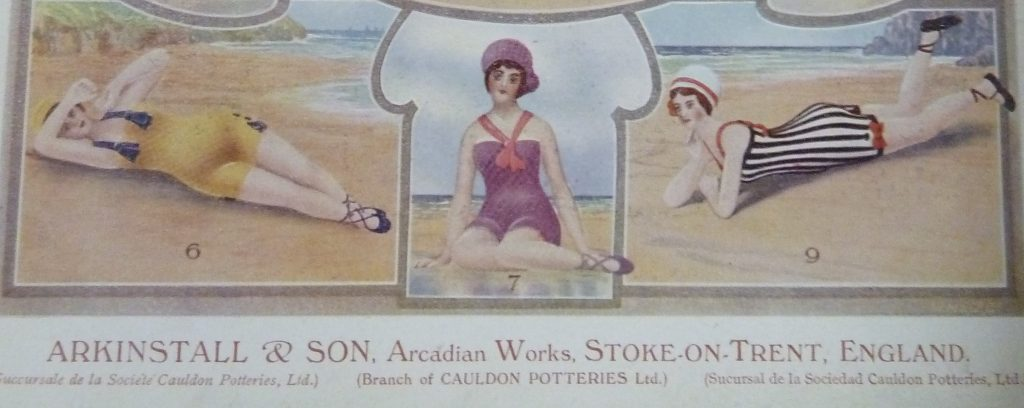 Detail from an advertisement for Arcadian Ware china novelty figures, c.1924
Detail from an advertisement for Arcadian Ware china novelty figures, c.1924“By the Sea, by the Sea, by the Beautiful Sea!” What would the seaside be without bathing – whether sea bathing or sun bathing? Despite their popularity, both are comparatively new activities. Sea bathing to benefit health was prescribed by doctors from the late 18th century. It was regarded as a dangerous activity only to be undertaken under careful supervision by professional bathing women who would guide the bather into and out of the water from bathing machines that were drawn into the water and from which the bathers emerged without endangering their modesty. By the mid-19th century affordable train travel meant that far more people could visit the seaside. Sea bathing became more accessible and started to be seen as a pleasurable activity, rather than a medical recommendation. The advent of mixed bathing from the early 20th century and the gradual abandonment of bathing machines meant that the importance of practical – and attractive – bathing costumes became more important. At a period when women’s clothing covered them from neck to ankle, bathing costumes, which clearly revealed the figure, were regarded as daring. This detail from an advertisement from the firm of Arkinstall & Co, makers of Arcadian china novelty wares, illustrates their range of bathing beauties figures in the latest costumes suitable for the beach, and dates to around 1924.
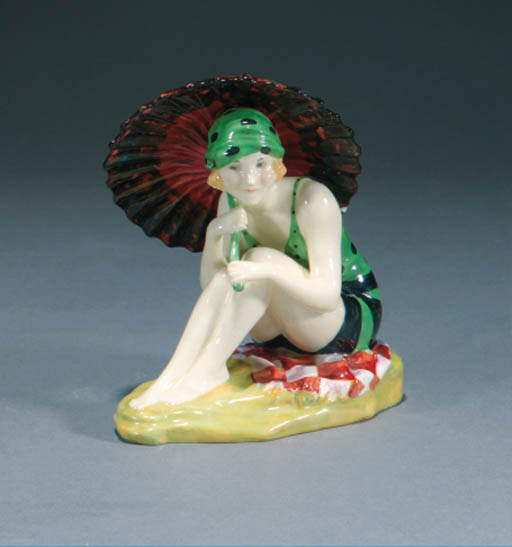 “The Sunshine Girl”, modelled by Lesie Harradine, c.1929 Royal Doulton, Burselm, Staffordshire,
“The Sunshine Girl”, modelled by Lesie Harradine, c.1929 Royal Doulton, Burselm, Staffordshire,A slightly more upmarket version of the same idea is this lovely figure of the “Sunshine Girl”, designed by Leslie Harradine for Royal Doulton in 1929 and in production until 1938. In this instance the figure is protecting her pale complexion from the sun by sheltering under a Japanese paper parasol. Within a few years of this figure going into production sun-bathing and tanned skin were to become highly fashionable, something which has only recently started to change.


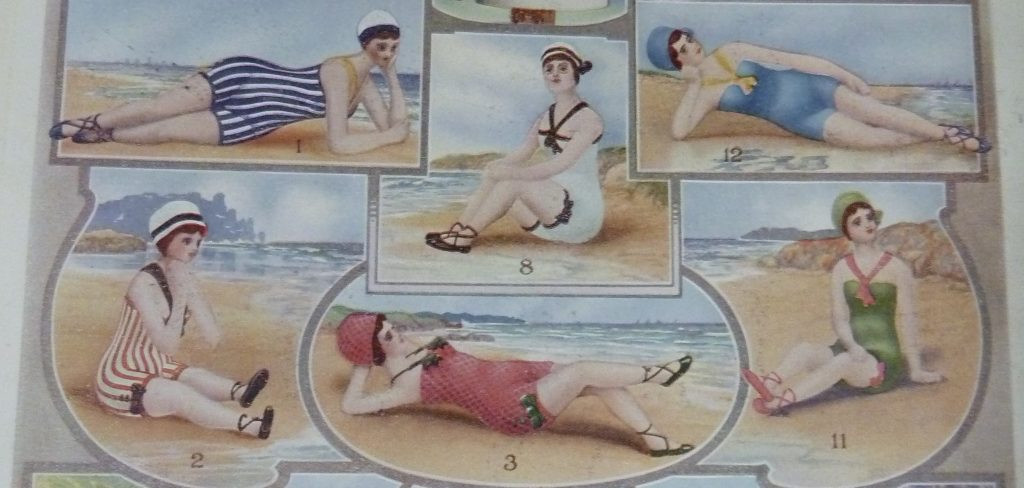



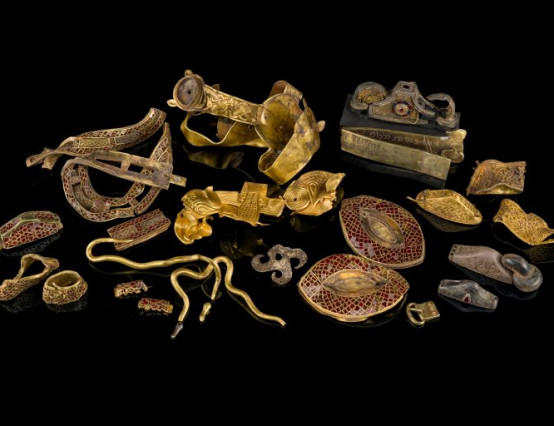

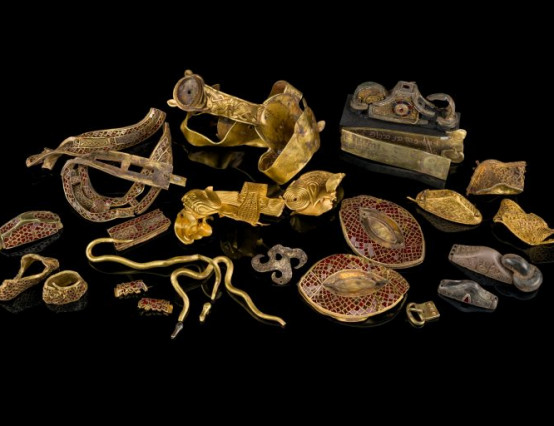
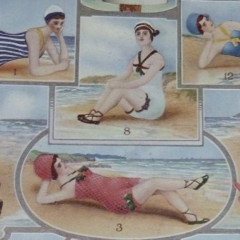

0 Comments